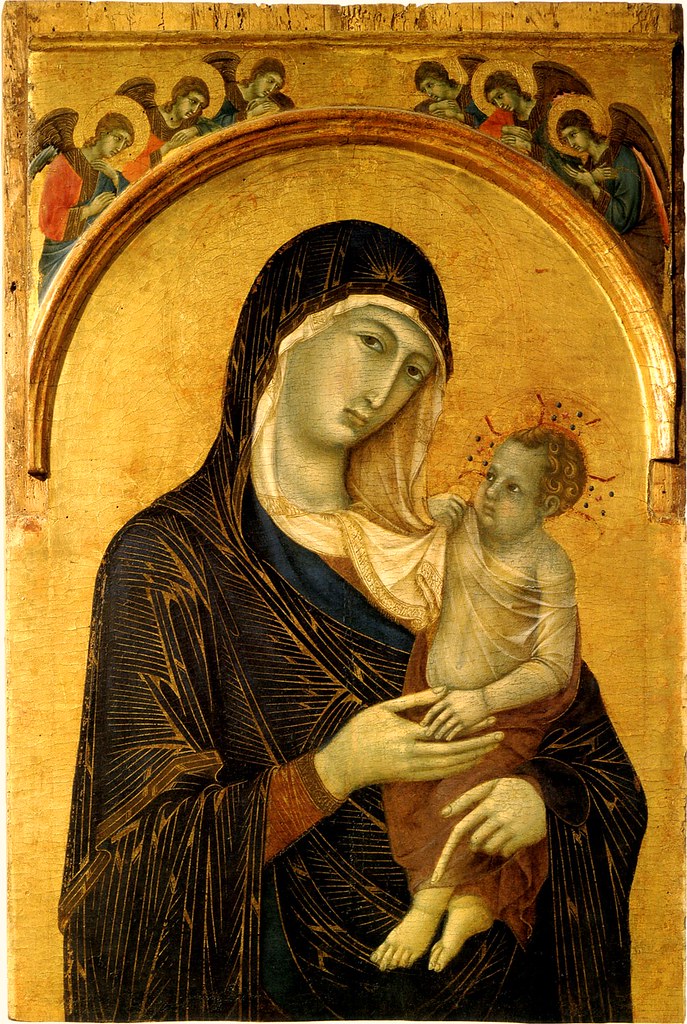Last night Professor Lawrence Feingold (Institute for Pastoral Theology, Ave Maria University) gave a lecture to the Association of Hebrew Catholics on the subject of the early Church Fathers on Mary as the New Eve. The full audio (and Q&A) of the lecture can be downloaded for free here.
First he spoke briefly about the Catholic conception of the development of doctrine, and how Mary herself provides the model for understanding the Church's ever-deepening understanding of the deposit of faith. Then he showed how Scripture itself points to Mary as the New Eve, and how the early Church Fathers recognized and developed this doctrine of Mary as the New Eve, all holding her to be without sin. He carefully explained how the developing understanding of Mary as the New Eve gradually unveiled the doctrine of the Immaculate Conception.
In the second part of his lecture he examined the later Church Fathers. From the sixth century on in the East, three Marian feasts were celebrated: the Annunciation on March 25, the Nativity of Our Lady on September 8, and the Dormition commemorating Mary's holy death on August 15. In this part of his lecture Professor Feingold presented a summary of the Mariology of the Eastern Fathers after Nicea. Then he discussed the theological debate concerning the Immaculate Conception in the Latin West, as that led into the time of the Scholastics. He explained why theologians such as St. Bernard, St. Thomas, and St. Bonaventure denied the Immaculate Conception, and how Bl. Duns Scotus resolved the problem. Eventually in 1477 the feast of the Immaculate Conception was made a feast for the universal Church, and in 1708 it became a holy day of obligation in the universal Church (though it had already been a holy day of obligation for centuries in the East). Then in 1854 Pope Pius IX defined it as dogma with the solemn bull, Ineffabilis Deus.
Since the Catholic doctrines concerning Mary remain one of the difficulties for Protestant-Catholic reconciliation, and since understanding Mary as the New Eve serves as the key, I think, to understanding the basis for the other Marian dogmas, considering together what the Church Fathers say about Mary as the New Eve is a very helpful way of resolving the Protestant-Catholic disagreements concerning Mary. Those disagreements can be seen clearly in the recent Evangelicals and Catholics Together document titled "Do Whatever He Tells You: The Blessed Virgin Mary in Christian Faith and Life." It presents both points of view (Catholic and Evangelical Protestant), as well as the common ground both sides share. Some of the Protestant concerns raised in the ECT document are addressed in Professor Feingold's lecture. (Click here to download the mp3 of Professor Feingold's lecture and the Q&A following it.) Or listen to them directly below:








2 comments:
Bryan - I listened to Professor Feingold's lecture today based on your recommendation, and it was very helpful. His discussion of the development of Marian doctrine over the course of centuries is an excellent method for explaining the slow and careful approach the Church takes to declare Dogma. Do you know if a transcript exists for this talk (perhaps he has delivered it before)?
I have a printed copy, but I don't have an electronic copy. If you send him a note, I'm sure he'd be glad to send you an electronic copy.
In the peace of Christ,
- Bryan
Post a Comment